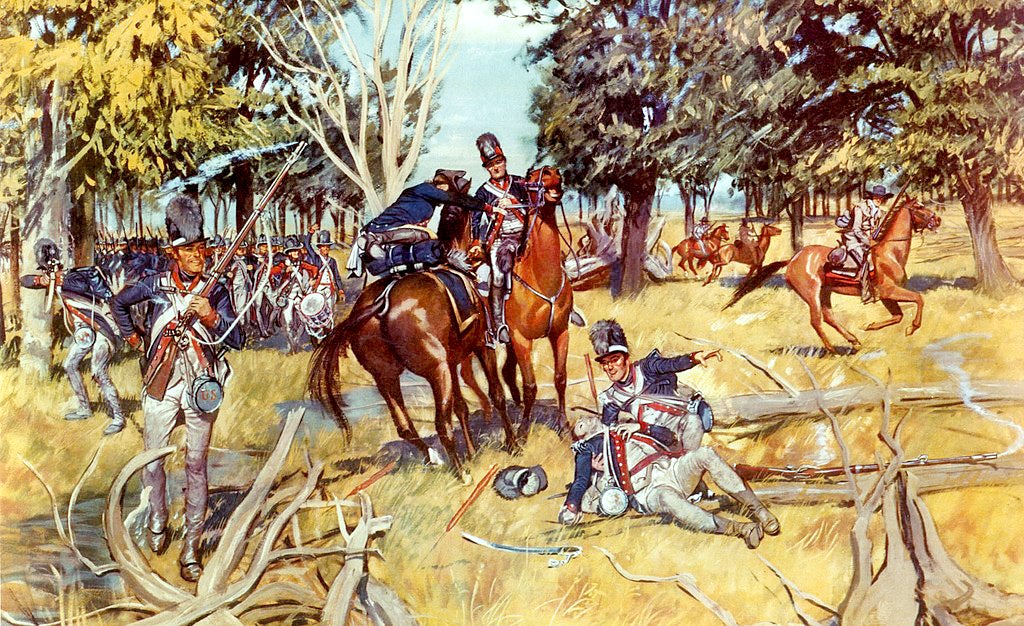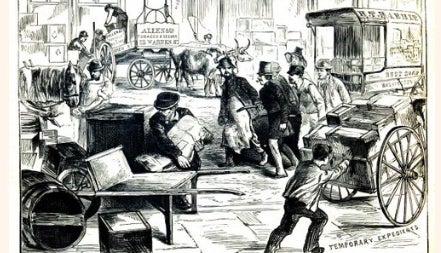In any reading of United States history, one encounters names of wars — King Philip’s War, Pontiac Rebellion, French and Indian War, American Revolution, Quasi War with France, Creek War, War of 1812, Seminole War, Mexican-American War, Civil War, Apache War, Great Sioux Uprising, Nez Perce War and others. However, there was one war fought on American soil between 1776 and 1814 which never received a formal name.
This war pitted Kentuckians against the Native American tribes living in the Northwest Territory. The Northwest Territory today consists of the states of Ohio, Indiana, Illinois, Michigan and Wisconsin. The Kentuckians involved in the war were, for the most part, from the bluegrass area and its surrounding lands. The Kentuckians who fought in the un-named war were members of the Kentucky militia. All males over the age of 18 were members of the Kentucky militia and were expected to turn out, armed with a rifle, when Kentucky came under attack or was launching a counter offensive into the Northwest Territories. Frankfort, as Kentucky’s capital city, played a key part in this un-named war.
The un-named war was set in motion in 1768 by the Fort Stanwix Treaty. The Iroquois, who did not control Kentucky as part of the provisions of the treaty, sold the lands south of the Ohio River to the British Crown. Virginia now claimed the Mississippi River as its western border and formed the county of Kentucky to administer its lands west of the Appalachian Mountains.
This opened Kentucky to European settlement. The Indian tribes of the Northwest Territory, who actually controlled Kentucky, objected to this land sale both diplomatically and violently. Those tribes living today in what is Alabama, Mississippi and Tennessee, whose lands were declared to be part of either North Carolina or Georgia, also objected to European encroachment both diplomatically and violently. The result was that two named wars were fought between European settlers and the Native American tribes of the southeast, the Cherokee War and the Creek War.

It is amazing that despite close to 5,000 men, women and children being killed in either Kentucky or the Northwest Territory, this 30-year armed conflict has no overall name. The battles fought during this conflict are found scattered throughout history books covering this period, but they are treated as separate, unconnected incidents. These incidents of armed conflict include the Siege of Boonesborough, Westervelt Massacre, Long Run Massacre, Capture of Ruddell and Martin Stations, Siege of Bryan Station, Battle of Blue Lick, Clarks Raid, Harman’s Defeat, St. Clair’s Defeat, Ambush at Fort Recovery, Battle of Fallen Timbers, Battle of Tippecanoe, River Raisin Massacre and Battle of the Thames.
Following the American Revolution, the Continental Army stood down, and defense of the 13 colonies was the responsibility of the local militia. Even with the forming of the United States in 1789, no regular army was raised. The impetus for the United States to raise a national army was the result of the failure of the Kentucky militia to defeat the Native American tribes of the Northwest Territory. Every encounter by the Kentucky militia with the tribes of the Northwest Territory had resulted in a defeat of the Kentucky militia, with some 500 members of the Kentucky militia being killed or wounded at St. Clair’s Defeat.
The defeat of the Kentucky militia at what history recorded as St. Clair’s Defeat had far-reaching consequences. As a result, President George Washington went before Congress and asked for funds to recruit and equip a Regular Army. Congress, in 1791, after much debate and by a thin majority, approved the organizing and equipping of a Federal Army for a two-year period.
Placed in command of the Regular Army was Gen. Anthony Wayne. His second in command was Gen. James Wilkinson — yes, that James Wilkinson, who at that time was secretly in the pay of both the British crown and the Spanish crown.
On August 20, 1794, Gen. Wayne and his Army of Regular soldiers and the Kentucky militia defeated the Native Americans of the Northwest Territory, led by Little Turtle and Blue Jacket, at the Battle of Fallen Timbers. The Treaty of Green Ville, signed on August 3, 1795, between the United States and the tribes of the Northwest Territory, would forever remove the direct threat of Native American excursions into Kentucky.
Kentucky militia, supporting Regular Army units, fought three more battles with the Northwest Native Americans, now under the leadership of Tecumseh — Tippecanoe, River Raisin and Thames. With the Americans winning the Battle of Thames on October 5, 1813, the power of the Northwest Territory Native American alliance was broken forever.









